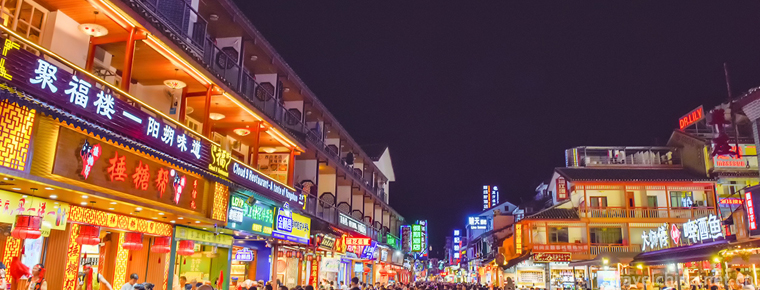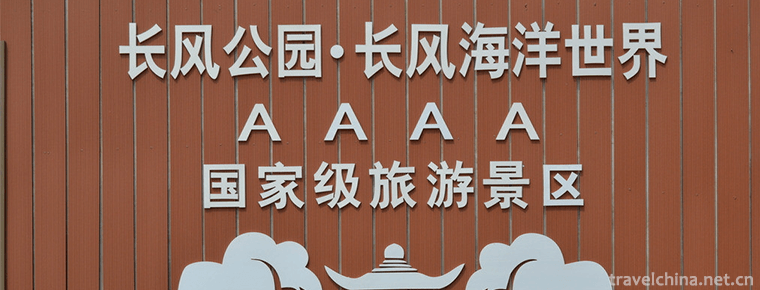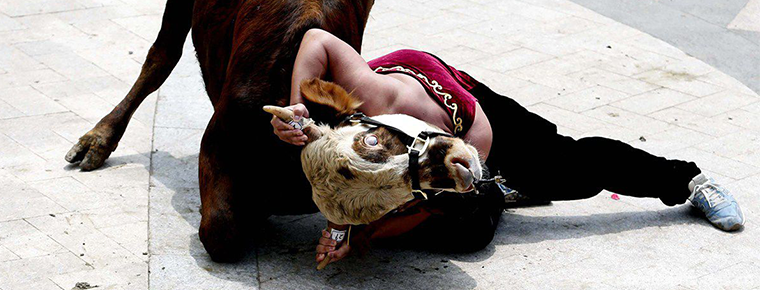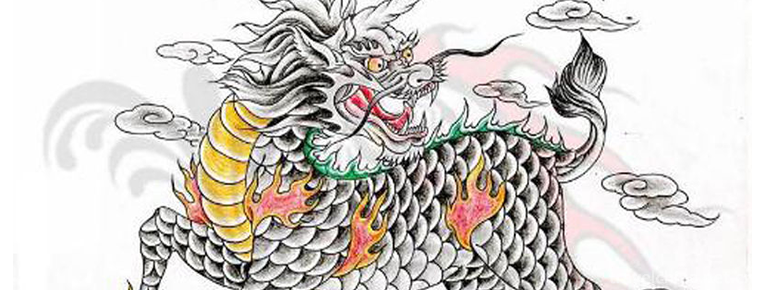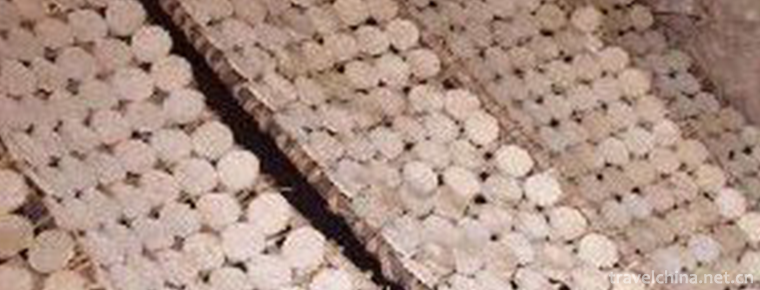Ancient Villages in Southern AnhuiXidi and Hongcun
Ancient villages in southern Anhui refer to some traditional villages distributed in Anhui and Jiangxi provinces of China and south of the Yangtze River. These villages have the characteristics of ancient Huizhou culture, the most representative of which are Xidi Village and Hongcun, selected as World Heritage Sites. Xidi and Hongcun ancient residential villages are located in the Huangshan Scenic Area in Yixian County, Anhui Province, Eastern China. Huizhou culture is the carrier of Huizhou culture, a typical representative of late feudal culture in China. It embodies the characteristics of Hui-style dwellings with exquisite craftsmanship.
In 1999, UNESCO listed Xidi and Hongcun, ancient villages in southern Anhui, China, as World Cultural Heritage Sites. In 2001, the ancient villages in southern Anhui became one of the fifth batch of key cultural relics protection units in China. In 2011, Ancient Villages in Southern Anhui Province were rated as 5A-level national tourist attractions.
In 1986, Xidi Village, one of the main representatives of ancient villages in southern Anhui Province, was designated as the key cultural relics protection unit in Anhui Province.
In 1998, the ancient villages in southern Anhui were appraised as the demonstration window of provincial civilized scenic spots.
In 1999, Xidi Village was designated as the declaring unit of World Cultural Heritage by the state. It submitted its declaration to UNESCO and passed an expert evaluation and inspection.
In 2000, the 24th UNESCO World Heritage Committee meeting held in Cairns, Australia, decided to list the ancient villages in Southern Anhui, China, Xidi and Hongcun on the World Heritage List. This is the first time that residential houses have been included in the World Heritage List.
In 2001, Ancient Villages and Ancient Buildings in Southern Anhui Province were announced by the State Council of the People's Republic of China as one of the fifth batch of national key cultural relics protection units.
On October 8, 2003, ancient villages in southern Anhui were approved as the first batch of famous historical and cultural villages in China.
In 2011, Ancient Villages in Southern Anhui Province were rated as 5A-level national tourist attractions.
In 2013, the ancient villages in Southern Anhui were listed as one of the national model projects of cultural relics maintenance and protection by the State Administration of Cultural Relics.
Ancient villages in southern Anhui are distributed in the mountainous areas south of the Yangtze River in Anhui Province, China.
Xidi Village is located in the center of Xidi Town in the southeast of Yixian County, Huangshan City. Its geographical coordinates are 117 degrees 38'east longitude and 30 degrees 11' North latitude. The area of Xidi Village is 12.96 hectares. Its East-West length is 700 meters and its north-south width is 300 meters.
Hongcun is located 11 kilometers northeast of Yixian County in the south of Anhui Province. It is now the residence of Hongcun Town. The whole village is situated in the south facing north, with its back to Leigang Mountain, the remaining veins of Huangshan Mountain. To the west, Yongxi River and Yangchang River flow by. Its geographical coordinates are 117 38', 30 11', and its area is about 280,000 square meters.
climate
It belongs to the subtropical seasonal rheumatic and humid climate area. Its main characteristics are clear seasons, short spring and autumn, long summer and winter, abundant heat, abundant rainwater, low sunshine hours and sunshine percentage, more clouds and fogs, high humidity, summer, flood and autumn drought, which have great impact on agriculture. The annual average temperature is 15.5-16.4 C and the precipitation is between 1395-1702 mm.
Landforms
Ancient villages in southern Anhui are situated in the Huangshan Mountains and their northern and southern slopes, with continuous peaks and deep valleys, which have obvious characteristics of southern Anhui mountainous areas.
The development pattern of ancient village landforms in southern Anhui is the result of development and evolution under the action of crustal changes and external forces. About 850 million years ago, the pre-Sinian strata were completely folded by Jinning movement, which constituted the basic geomorphological outline of the Huangshan Mountains, and most of them were in the rising period. From 350 million to 410 million years ago, the Caledonian period showed a large upward movement. About 195 million to 280 million years ago, the Indosinian movement formed a NE-trending linear fold, forming a NE-trending extension of the mountain body. Since then, the morphology of ancient villages in southern Anhui has tended to be basically finalized.
Xidi
Xidi is a village in Xidi Town, southeast of Yixian County, southern Anhui Province. Xidi was founded in the 11th century of the Song Dynasty during the reign of Yuanyou (Song Zhezhong). As the river flows westward through the village, it was originally called "Xichuan". In ancient times, there was a post station in the west of the village, which was called "shop delivery office", so it was named "west delivery" and known as "peach blossom source family".
The ancestor of Xidi was the son of Li Ye of Tang Zhaozong, who fled from the people because of the turmoil and changed his surname to Hu. Xidi belonged to Hu's village, which was inhabited by the blood relationship. The Hu family began to do business in 1465. They succeeded in doing business. They built houses, built temples, paved roads and built bridges. In the mid-17th century, some people in Hu's family moved from business to official places, which resulted in the development of villages. From the 18th to 19th centuries, the prosperity of Xidi reached its peak, when there were about 600 houses in the village.
A main road in Xidi Village runs through the East and west, and passes through many narrow lanes along with one parallel Street on both sides. It constitutes the east-oriented and north-south-extending village lanes. Most of the street lanes in Xidi Village are paved with bluestone along the stream. There are small squares in front of public buildings such as the Hall of Respect and Love, the Hall of Pursuit and the Archway of Hu Wenguangshi. Ancient dwellings retained today retain the basic features and characteristics of Hui-style dwelling villages in Ming and Qing dynasties as a whole. They mainly include 124 ancient dwellings and 3 ancestral temples, which are well-protected ancient buildings in Ming and Qing dynasties. Most of the dwellings are open to the public. The main buildings are the Qingshi archway built in the sixth year of Wanli (1578), the doctor's office built in the thirtieth year of Kangxi (1691), the peach and plum gardens represented by the courtyard gardens, and the worship hall represented by the ancestral hall. The basic units of traditional dwellings are generally three-bay, inward square or rectangular. Although the plane is square, it is not rigid, compact and not constrained. After careful combination, the spatial pattern is unified and flexible, the plane layout is symmetrical, the middle hall, the two sides of the chamber, and the staircase is on the front and back of the hall or on the left and right sides. An inner patio is formed at the entrance for lighting and ventilation. On this basis, the building develops vertically and horizontally, and combines freely, forming a multi-form dwelling house with two, three and four entries. The basic structure of the residential buildings is the herringbone sloping roof with lifting beams or piercing buckets, the external wall enclosure structure and the gable isolation structure. The base is made of Yixian bluestone, the top is made of fallen or convex solitary shape, and the flowers and geometric patterns are carved out of bluestone. The gates are framed with Yixian bluestone, and the upper part is inlaid with a door cover and carved with bricks and stones. The themes of the gates are flowers, birds, insects, fish or historical scenes, which have their own implications.
The courtyards of Xidi dwellings are mostly located in the vestibule, while some courtyards are located on either side of the building or behind the building. The courtyard is flexible, compact and exquisite. Skillful use of gardening techniques, within the limited space, ingenious and due to borrowing, is full of poetic and picturesque in the instant garden scenery. Residential courtyards are good at using leaky windows, doors and holes, partitions, buildings, flowers and trees to divide and combine space to create a clear, layered, vague effect, to express multiple artistic conceptions, trigger people's imagination and association, so as to obtain a variety of feelings and inspiration.
Hong Village
Hongcun is located at the foot of Huangshan Mountain in the south of Anhui Province, China. It is an ancient village with a large number of historical buildings in Ming and Qing Dynasties. The village has also built a perfect water system and a distinctive "cow" shape layout, which is a typical representative of Huizhou residential buildings.
Founded in the Northern Song Dynasty and three years (1113), the village was originally called Hongcun, where the Wang family lived. During the Yongle period of Ming Dynasty, the Wang clan chief asked Mr. Fengshui to reconstruct the environment, redesign the buildings and divert water into the village. In the mid-Qing Dynasty, large-scale construction was carried out again in the village, which was renamed "Hongcun" to avoid the taboo of "Hongli" of Emperor Qianlong. The village still retains a large number of ancient buildings in Ming and Qing Dynasties, including one in Ming Dynasty, 102 in Qing Dynasty and 34 in Republic of China. Most of them are well preserved, which is a typical representative of Huizhou folk houses.
One of the characteristics of Hongcun is that it has a perfect water supply system. Villagers introduced the river water from the west of the village into the village. They excavated a nearly one-meter-wide Shenzhen with nine curves and ten curves to provide domestic water for each household. They also played a role in regulating temperature and beautifying the environment. In the middle of the village, Shuizhen formed a half-moon moor, and in the south, formed an arch-shaped South Lake, which constituted the unique style of Hongcun.
Another distinguishing feature of the village is that it adopts a bionic "cow" layout on the plane. Taking Leigang Mountain as the head of cattle, two ancient trees at the entrance of the village as the horn, moonmarsh as the heart of cattle, South Lake as the belly, winding Shenzhen as the intestine of cattle, residential buildings as the body of cattle, four ancient bridges as the foot of cattle, the shape is vivid, called "mountain as the horn of cattle-head tree, bridge as the body of four-hoofed house".
The main buildings in Hongcun are residential buildings and private gardens, as well as public facilities such as academies and ancestral halls. The building group is relatively complete. All kinds of buildings pay attention to carving. Wood carving, brick carving and stone carving are exquisite and have high artistic value. Most of the streets and alleys in the village are built near the water, and the residential buildings are also surrounded by the moonmarsh layout. Residences are mostly second-class courtyards. Some people also introduce Shenzhen water into their houses to form water courtyards and open up fish ponds. The typical buildings are Nanhu Academy, Yuexutang, Chengzhitang Hall, Deyitang Hall, Songhe Hall and Biyuan Hall.
Cultural value
The members of the World Heritage Committee commented that Xidi and Hongcun, two traditional ancient villages, still maintain to a large extent the features of those villages that have disappeared or changed in the last century. The style of its streets, ancient buildings and decorations, as well as the complete water supply system of residential buildings are very unique cultural relics.
historical value
Southern Anhui Mountainous Area has a long history and profound cultural accumulation. It has preserved a large number of similar and distinctive traditional buildings and villages. The ancient villages in southern Anhui not only integrates skillfully with topography, landform and landscape, but also with the support of Hui merchants'strong economic strength to their hometown in Ming and Qing Dynasties. Cultural education is flourishing day by day. After returning home, they conceive and build houses with elegant, literary, noble and detached mentality, which makes the cultural environment of the ancient villages richer and the village landscape richer. More prominent.
The biggest difference between the ancient villages in southern Anhui and other villages is that the construction and development of ancient villages in southern Anhui have been separated from the dependence on agriculture to a considerable extent. In terms of consciousness, life style and interest of the residents of ancient villages, they surpass the peasants'ideological consciousness and the general citizen stratum greatly, but keep and pursue in accordance with the literati and the official stratum, so they have a strong cultural atmosphere. On the basis of the basic formulas, the ancient villages in southern Anhui adorned with different decorative techniques, such as building small courtyards, digging pools, setting leaky windows, skillfully setting bonsai, carving beams and painted pillars, inscribing plaques and creating elegant living environment, which embodied the high cultural quality and artistic accomplishment of the local residents. The site selection and construction of ancient villages in southern Anhui follows the theory of Zhouyi Fengshui, which has a history of more than 2000 years. It emphasizes the ideal state of harmony between man and nature and full respect for the natural environment. It pays attention to both material and spiritual needs. It has a scientific basis and a high aesthetic concept.
Architectural value
The cow-shaped villages and artificial water systems planned and constructed by Guhong villagers are architectural wonders: the towering green Leigang is the head of a cow, the towering ancient trees are the horns of a cow, and the scattered residential groups from east to West are like the pet cow's bodies. Yingqingquan is called "cow intestine". It flows into Yuetang, which is called "cow stomach" through the village, and then filters out to Nanhu, which is called "cow stomach" outside the village. Four bridges were erected successively on rivers and streams around the village to serve as brackets. This kind of village water system design not only solves the fire fighting water for villagers, but also regulates the temperature, provides convenience for residents to use water for production and daily life, and creates a good environment of "the raccoon is far away from the river, and there is a clear spring in front of the house". The village is now well preserved in the Ming and Qing Dynasties, more than 140 ancient houses, simple and elegant, interesting.
Since 2004, the Yixian government has allocated 700,000 yuan of special funds for termite control every year. The new international IPM bait system has been adopted to control wood structures in ancestral halls and ancient dwellings. The harmful effects of termites and other pests have been effectively solved and the safety of ancient buildings has been ensured.
In 2013, the overall protection of Huangtian and Chengkan villages in southern Anhui Province has been listed by the State Administration of Cultural Relics as one of the national demonstration projects for the maintenance and protection of cultural relics. The purpose of this project is to establish a set of scientific and rigorous standards for the maintenance of ancient dwellings and explore the ancient villages throughout the country through the key maintenance and overall protection of ancient villages. The mode of protection and utilization of dwellings. The project includes Huangtian, Chengkan two ancient villages and Qingxiling Tomb in Yixian County, Hebei Province. The construction of the demonstration project of overall protection and maintenance of Huangtian and Chengkan ancient villages mainly includes the renovation and protection of ancient residential units, the construction of ancient residential fire protection, technology and lightning protection facilities, the renovation of ancient village environment and the restoration of historical features.
In 2014, the overall protection project of Huangtian ancient village was steadily promoted. The maintenance schemes of the first phase of 7 cultural relics sites have been approved and started construction, and the second phase of 12 cultural relics sites has been approved and approved. The whole project will take four years.













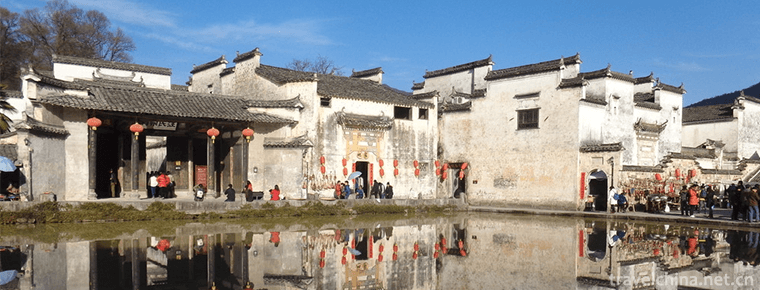
-
yangshuo west street
West Street is nicknamed Foreigner's Street, located in Yangshuo County,.
Views: 138 Time 2018-10-12 -
Shanghai Changfeng Ocean World
Shanghai Changfeng Ocean World belongs to the world's largest aquarium chain brand of Merlin Entertainment Group, which is the first and second largest in Europe.
Views: 222 Time 2019-03-17 -
Fuzhou Reviews
Fuzhou dialect commentary is a unique traditional form of storytelling in Fuzhou dialect of Fujian Province, which is popular in Fuzhou, Fujian Hou, Yongtai, Changle, Lianjiang.
Views: 129 Time 2019-04-30 -
Bullfight
Bull-wrestling is a traditional competitive sport of the Hui people. It means throwing, wrestling and throwing. It can also be called bullfighting of the Hui people..
Views: 100 Time 2019-05-01 -
Venus Inkstone Making Skills
Venus inkstone making technology, the local traditional handmade inkstone making technology in Xingzi County, Jiangxi Province, is one of the national intangible cultural heritage..
Views: 263 Time 2019-05-07 -
Legend of Kirin
The legend of Kirin is mainly spread in Jiaxiang County of Shandong Province and its surrounding areas. Kirin is an auspicious God and animal in ancient legends. Ancient books say .
Views: 126 Time 2019-06-10 -
Soil alkali firing technology
On June 7, 2008, the soil-alkali firing system was approved by the State Council and listed in the second batch of national intangible cultural heritage list..
Views: 388 Time 2019-06-23 -
Guiyuanlin Zhangba Luzhou
Longan forest in Zhangba, Luzhou is a genetic Bank of Longan Germplasm in inland China. As the most concentrated longan plantation with a history of more than 100 years, it is as valuable as giant panda in zoology..
Views: 177 Time 2020-10-16 -
Needlework of Chinese embroidery
Category: random needling, straight needling, disc needling, trowel needling, grabbing needling, flat needling, scattered wrong needling, weaving embroidery, applying needling, auxiliary needling, variant embroidery .
Views: 124 Time 2020-12-12 -
Suining economic development
In 2019, Suining's GDP will reach 134.573 billion yuan, an increase of 8.1% over the previous year (the same below) at comparable prices. Among them, the added value of the primary industry was 18.521 billion yuan, an increase of 2.7%; the added value of the .
Views: 349 Time 2020-12-16 -
Leshan landform
Leshan City is located in the transition zone from Sichuan basin to southwest mountainous area. The overall trend is high in Southwest China and low in Northeast China. The highest point is the main peak of Ma'anshan in Ebian Yi Autonomous County, with an altitude .
Views: 366 Time 2020-12-17 -
Dazhous tertiary industry
In 2019, the total retail sales of social consumer goods in Dazhou city will reach 98.794 billion yuan, an increase of 11.0%, 0.6 percentage points higher than that of the whole province, ranking the fourth in the province. From the regional perspectiv.
Views: 186 Time 2020-12-20
